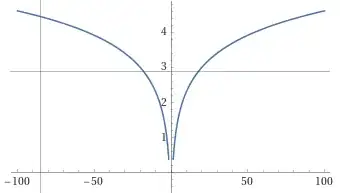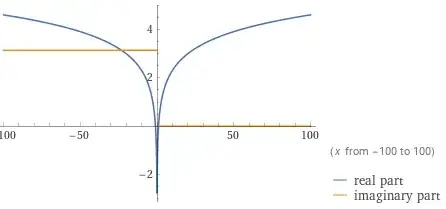why do we put the absolute value in the antiderivative of $\int \frac{1}{x}dx = \ln|x|+C $ and not just $\ln(x)+C $
I want to refer that similar questions were asked before here and here
I am a first-year college student who took a course on linear algebra with calculus at the same time. I was puzzled by the fact that we had to use complex numbers in linear algebra, but we were not allowed to use them in calculus. For example, on one side of the test, we had to solve problems involving complex eigenvalues and eigenvectors, but on the other side, we had to ignore the existence of complex numbers and "pretend" that they never existed and use real-valued functions only to me that was very silly but made me wounder about the relationship between complex numbers and calculus especially antiderivatives because this is one of the parts that we ignore the existence of complex numbers by putting the absolute value in antiderivative of $\frac{1}{x}$ . I know that antiderivatives can be generalized to the complex domain using complex analysis, but I have not studied that subject yet (and I may never do so in college). However, I have seen some examples of antiderivatives involving complex numbers on the internet and since antiderivative can be generalised in the complex world isn't that weird to make $\int \frac{1}{x}dx = \ln|x|+C $ and that would make antiderivative with complex numbers meaningless (as the absolute value of any complex number is real number ), also wolfram alpha don't put the absolute value and give the message "assuming a complex-valued logarithm " so that got me thinking if we generalise antiderivative in the complex numbers then the antiderivative of $\frac{1}{x}$ is $\ln(x)+C$ and not $\ln|x|+C$ .
I am curious about this question, but I do not have enough background knowledge to answer them myself. Therefore, I decided to ask here, Thank you for your help .
I see there are many different answers in the comments (personally I liked Joe's answer the most), so I decided to put a bounty on this question.
I think many people will want to know the answer to this question, and I think many students have asked themselves about this question before.
I am sorry if the question seemed too basic and elementary for some of you but as a new math student I struggle with question a lot and I don't have enough experience or knowledge to answer this question.


Ryszard Szwarc or the one by Joe (which honestly I didn't understand) and I don't know what is the the correct answer – pie Sep 08 '23 at 14:44